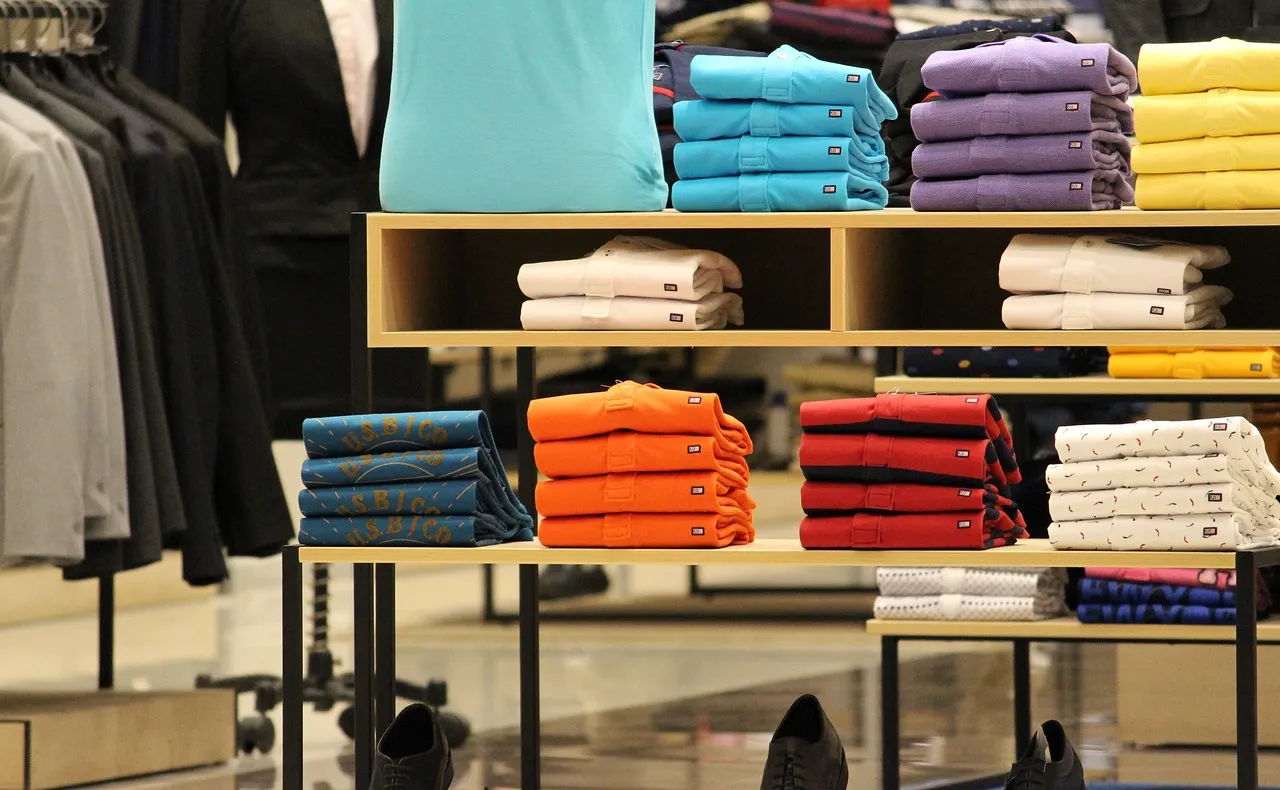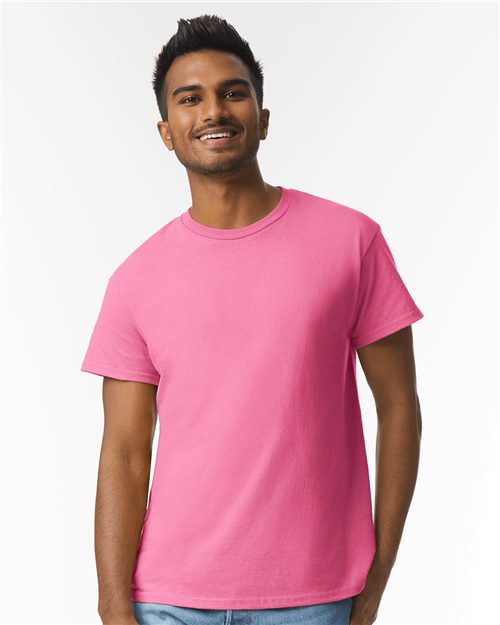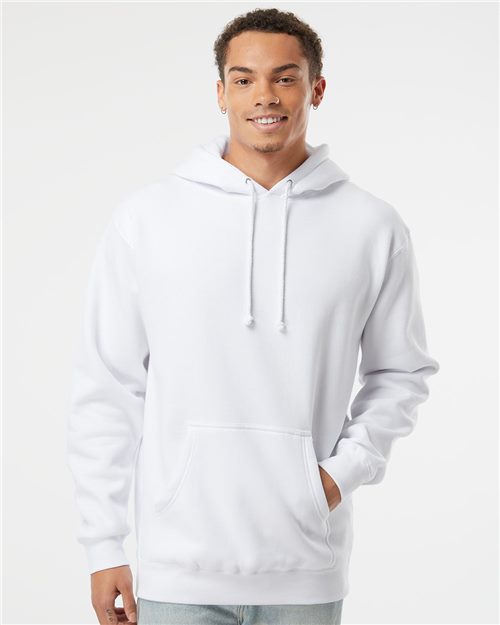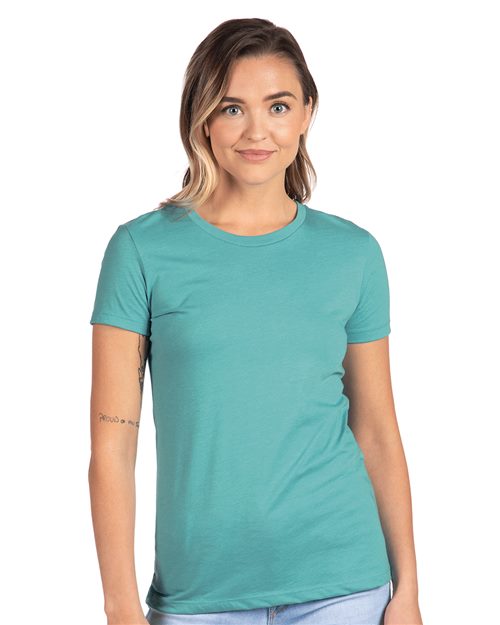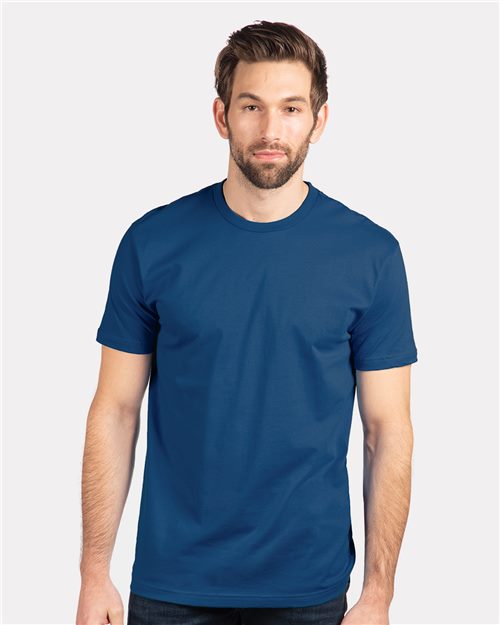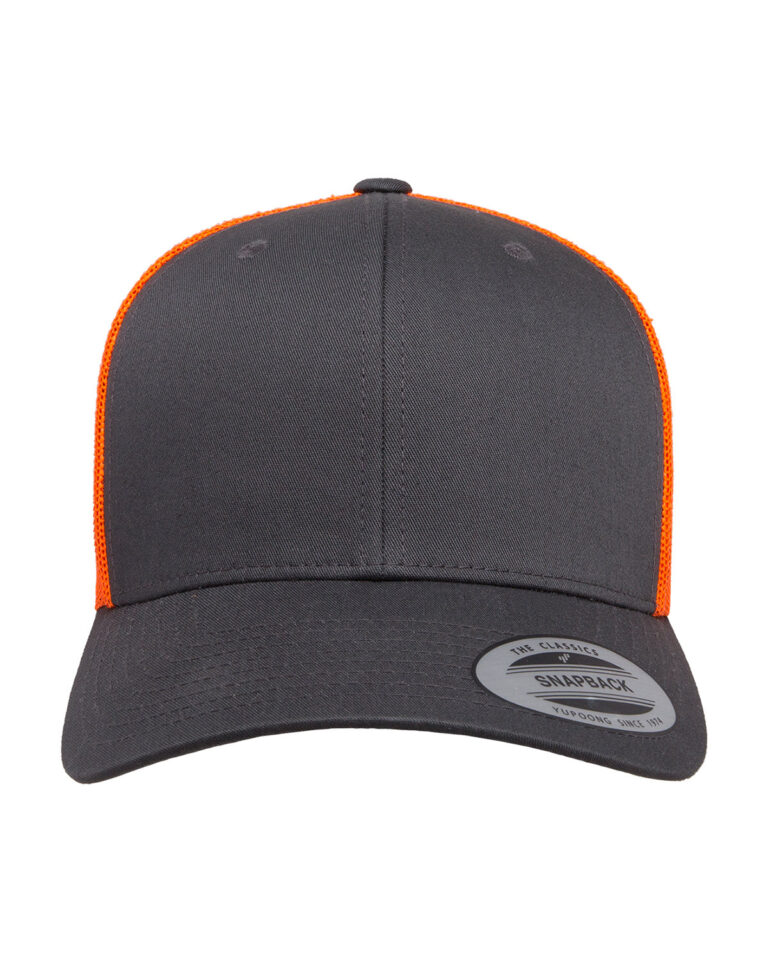Pricing t-shirts can be tricky, whether you’re setting up shop online or in the retail world. Everyone’s searching for that sweet spot where quality meets affordability to make their products irresistible.
This guide will navigate you through the maze of cost calculations and pricing strategies, ensuring your custom tees are priced perfectly to attract buyers and boost your margin. Dive in—you might just find the key to unlock your t-shirt venture’s potential!
Key Takeaways
- Know your production costs for t-shirts, including materials, labor, and design. Use a formula like Retail Price = [(cost to produce) ÷ (100 – profit %)] x 100 with a common 50% profit margin to set the right price.
- Compare your prices with competitors and make sure they’re fair for what customers are willing to pay. Remember psychological pricing tricks like ending prices in .99 can boost sales.
- Online sellers must consider marketplace or platform fees when setting prices. Also think about including shipping costs in the price or offer free shipping as an extra perk.
- Offer bundles or discounts on multiple purchases to increase sales while maintaining profits.
- Make a custom t – shirt pricing calculator that factors in all expenses and desired profits to quickly find the best price point for various shirt designs and sizes.
Understanding Your T-Shirt Production Cost
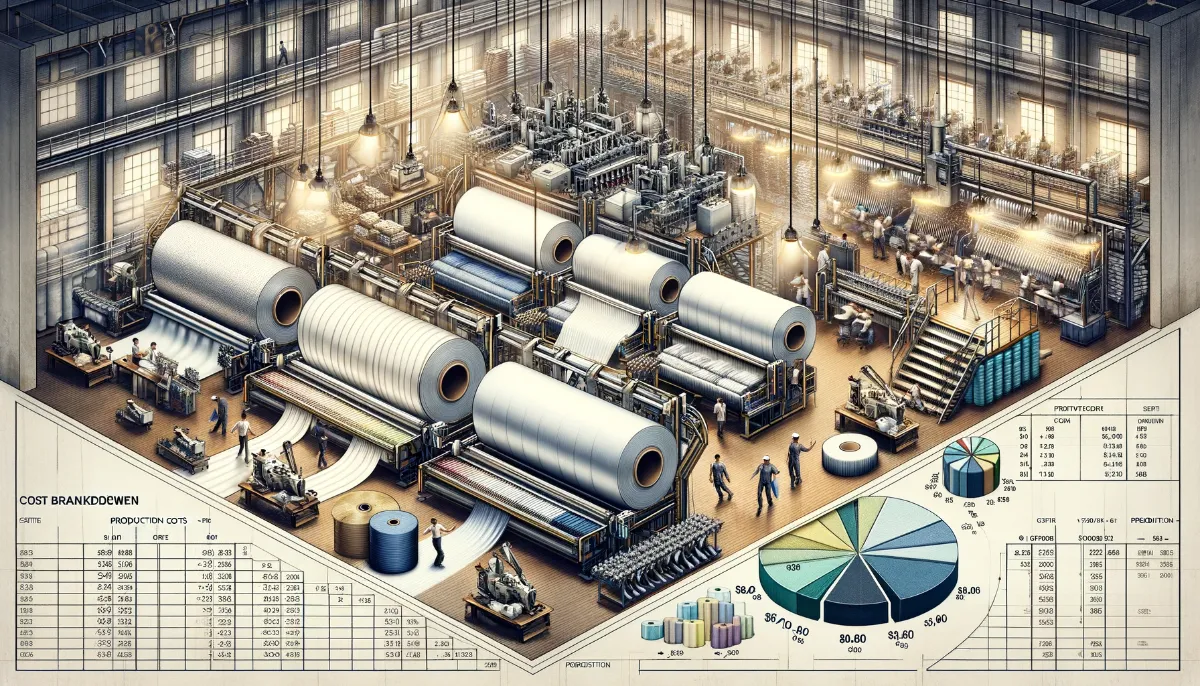
Peeling back the layers of your t-shirt production cost is pivotal—every thread, print, and hem plays a part in the final price tag. It’s not just about covering expenses; it’s an artful balancing act to align costs with customer expectations while keeping your profit healthy.
Production Expenses
To price your t-shirts right, you need to know how much they cost to make. Production expenses are a big part of this total cost. These include the money spent on materials like fabric and ink.
They also cover what it costs for labor and using machinery to print designs.
Don’t forget other things tied to making t-shirts! Costs can pop up from shipping materials to your workspace or paying fees if you’re part of a fulfillment program that handles orders.
Every expense counts when setting your final retail price and ensuring you make a profit on every shirt you sell.
T-Shirt Design Costs
Designing a t-shirt isn’t just about creativity; it’s also about the money you spend to bring those designs to life. Every detail, from choosing high-quality ink to ensuring your design is set at 300 DPI for crisp screen printing, plays a role in the cost.
Your design can be simple or complex, but keep in mind that more colors and intricate patterns mean higher costs due to longer production time and more materials used.
Don’t overlook the dollars spent on graphic designers if you’re hiring out for that skill. Their talent turns your vision into something wearable but comes at a price. Sure, you could cut corners and save here and there, but investing in top-notch design is crucial for standing out in the crowded custom apparel market—this means budgeting wisely for both creation and production of your t-shirts.
Wholesale Pricing vs Retail Pricing Strategies
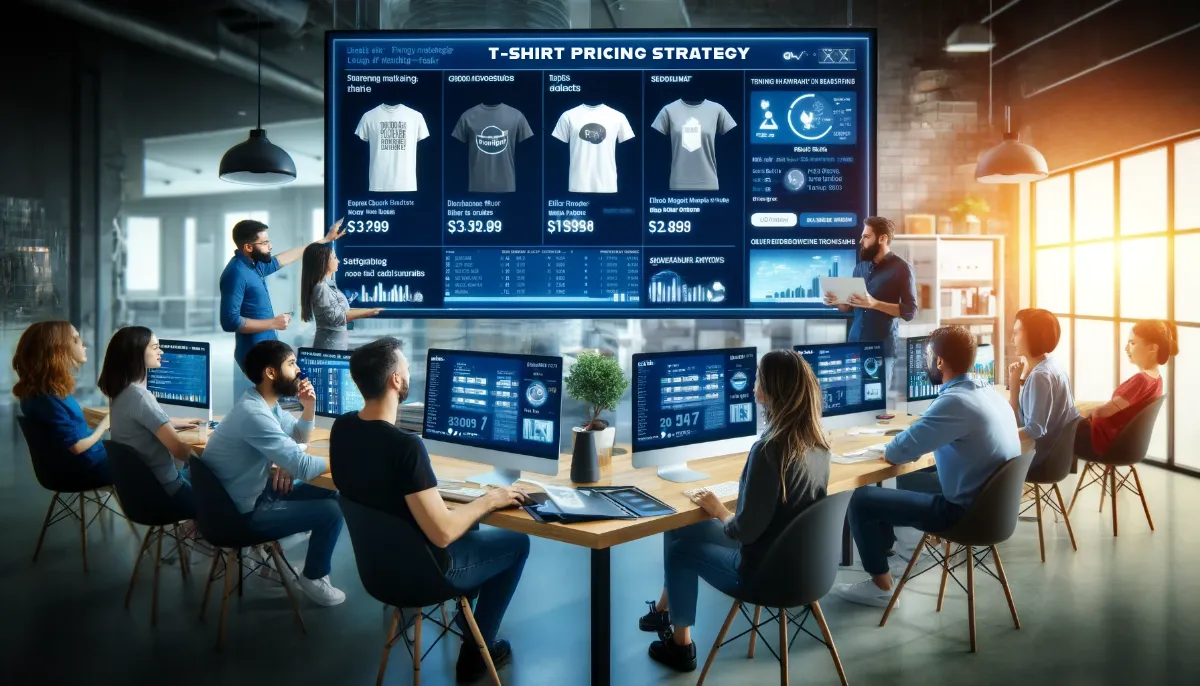
Navigating the realm of pricing can feel like a high-stakes balancing act, especially when distinguishing between wholesale and retail strategies for your T-shirt business. It’s not just about setting a price; it’s crafting an approach that ensures profitability while remaining enticing to both bulk buyers and individual customers alike.
Pricing Printed T-Shirts
Pricing printed t-shirts right is key to making a profit. You need a strategy that covers costs and appeals to customers. Here’s how you can price your printed tees:
- Figure out your total production cost first. This includes the shirt, printing, labels, and packaging.
- Add a profit margin on top of the production cost. A 50% margin is common, but you can adjust it.
- Check what others charge for similar shirts. Set your prices close to these to stay competitive.
- Offer unique designs or better quality to justify higher prices. Customers will pay more for something special.
- Keep an eye on what customers are willing to spend. Adjust your prices if they think they’re too high or too low.
- End your prices with an odd number, like $19.99 instead of $20. People think they’re getting a deal.
- Bundle shirts together for discounts. Sell two for a price lower than buying two separately.
- Use a t – shirt pricing calculator to make sure you’re on track. It helps you see if your prices make sense fast.
- Think about offering free shipping by adding the cost into the shirt price. Customers love not paying extra for shipping.
How to Price Your T-shirts for Retail
After considering how to price printed T-shirts, it’s essential to focus on retail. Setting the right price for your T-shirts in a retail environment involves careful thought.
- Begin by calculating your production costs. Add up all your expenses, including materials, labor, and overhead.
- Choose your profit margin. A common approach is to aim for a 50% profit; however, you might go higher or lower depending on your strategy.
- Study your competitors. Look at their prices to understand what customers expect to pay and adjust accordingly.
- Consider the value you provide. High-quality custom T-shirts can often command higher prices.
- Think about psychological pricing. Set prices just below round numbers—$19.99 instead of $20 feels like a better deal.
- Use bundling as an option. Offer discounts when customers buy more than one T-shirt to move more products.
- Implement anchor pricing. Show the original price next to the sale price so customers see the savings they’re getting.
- Keep shipping costs in mind. If they’re high, consider folding them into the price and offering ‘free’ shipping as an incentive.
- Take note of platform fees if selling online through marketplaces or ecommerce solutions like Shopify and adjust prices so you don’t lose out on profits.
Increasing Your Profit Margins
Maximizing your profit margins starts with smart pricing. Have a close look at your production expenses and see where you can cut costs without compromising quality. Maybe ordering t-shirts in bulk could slash prices, giving you more room to make money on each sale.
Consider handling shipping costs cleverly too—perhaps by including them in the item price or offering free shipping to encourage more sales.
Think about how much customers are willing to pay for your t-shirts. Set prices that reflect the value they find in your brand while ensuring a healthy profit for you. Don’t be afraid to charge higher if your designs are unique and of high quality—customers may see the value and happily pay extra.
Remember, every dollar counts when it comes to increasing what you earn from each t-shirt sold!
T-Shirt Pricing Calculator: A Comprehensive Guide
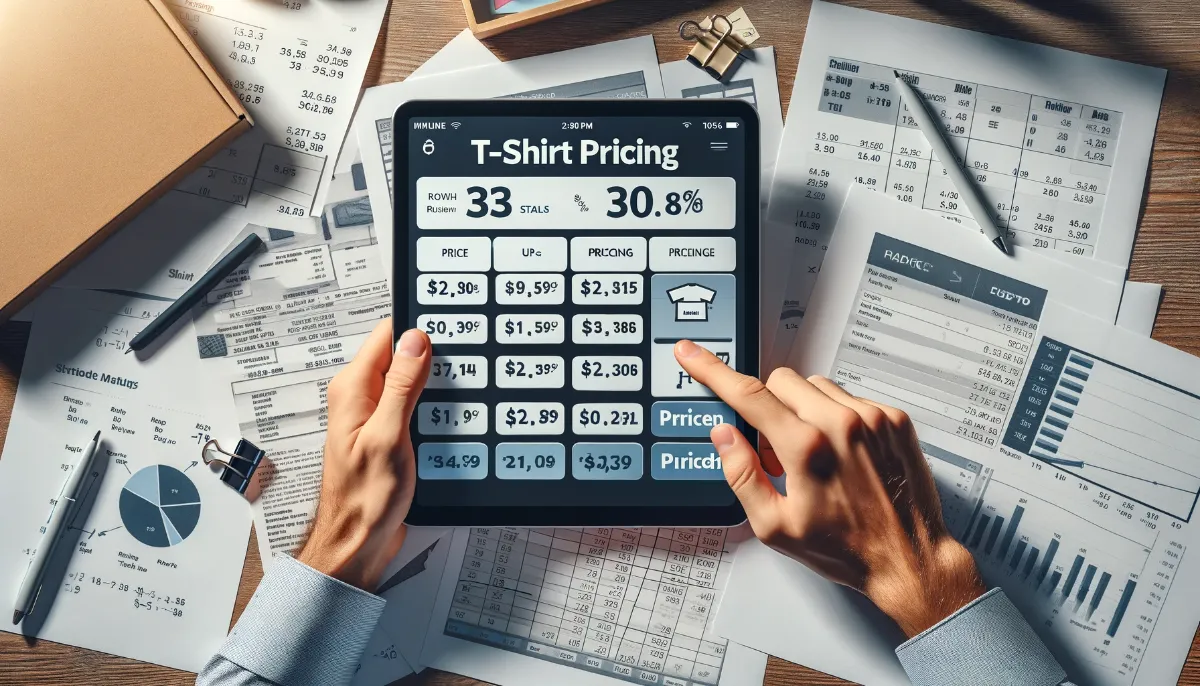
Navigating the complexities of t-shirt pricing can feel like a maze, but fear not—a comprehensive guide is here, turning confusion into clarity. Imagine a tool that takes the guesswork out of your pricing strategy, one that adapts to various factors with precision—welcome to the realm of the T-Shirt Pricing Calculator.
Factors to Consider: Target Market, Production Costs, Print Areas, Shirt Sizes, Shipping Costs
Pricing your t-shirts right is crucial for your success in 2024. Let’s dive into the factors that will help you set the perfect price.
- Target Market: Know who wants to buy your shirts. Are they teens, adults, or fitness enthusiasts? Your prices can change depending on who you’re selling to. High-end fashion seekers might pay more than bargain hunters.
- Production Costs: Add up how much it costs to produce your t-shirts. This includes the shirt itself, printing, labor, and any other process like dyeing or washing. Keep track of both fixed and variable costs.
- Print Areas: More print areas mean higher costs. If you’re printing on just the front, it will cost less than doing both front and back.
- Shirt Sizes: Offering a range of sizes? Larger sizes may cost more to make. Consider this when setting your prices.
- Shipping Costs: Don’t forget about getting your product to the customer! Figure out shipping fees and decide if you’ll pass these on or offer free shipping to attract buyers.
How to Use a T-Shirt Pricing Formula
Figuring out how much to charge for your t-shirts can seem tricky. The right formula makes it simple and clear.
- Start with your t – shirt cost. This is how much you pay to make each shirt, including materials and labor.
- Decide on your desired profit margin. Most retailers aim for a 50% profit, but you can choose what works for you.
- Plug those numbers into the formula: Retail Price = [(cost to produce) ÷ (100 – profit %)] x 100.
- Use this equation to calculate the price of each shirt size and design.
- Remember that larger sizes or complex designs might cost more to produce.
- Consider shipping costs too, if they apply, and add them to your production costs before using the formula.
- Look at what others charge for similar shirts but keep your unique costs and target audience in mind.
- Once you have a base price, adjust if necessary—higher quality materials can justify charging more.
- Don’t forget about psychological pricing – ending prices with odd numbers like $19.99 instead of $20 can boost sales.
- Test different prices with small batches of shirts to see what sells best without changing the whole line-up.
Creating Your Own Custom Calculator for T-Shirt Pricing
Check out this t-shirt pricing calculator, helps you set reasonable prices. It takes into account all costs and desired profits.
- Start with your production expenses. Include the cost of materials, printing, and labor.
- Add design costs. This covers the fees for graphic designers if you hire them.
- Factor in shipping costs. Decide whether these are part of the price or additional.
- Consider print areas and sizes. Larger prints and sizes may cost more.
- Research your target market. See what customers are willing to pay.
- Look at competitors’ prices. Make sure your prices are competitive but fair.
- Calculate a profit margin. A 50% profit margin is a good starting point.
- List all direct costs for one t-shirt: material, labor, printing, and tags/labels.
- Estimate indirect costs such as utilities, rent, equipment wear and tear per shirt.
- Decide how much to pay yourself for designing each shirt or add designer fees.
- Total the costs and divide by the number of shirts to find the cost per shirt.
- Choose a markup percentage (like 50%) for profit to add to your cost per shirt.
Online Retail Strategies for T-Shirt Pricing
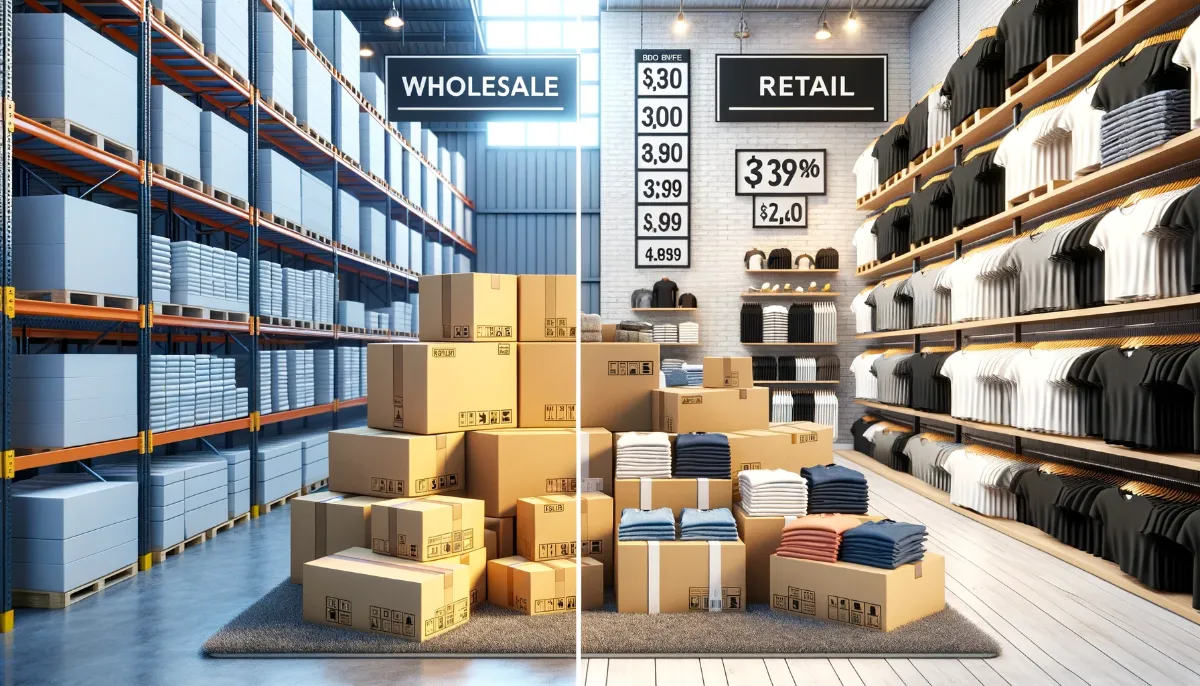
Navigating the digital marketplace requires a savvy approach to pricing your t-shirts—understanding platform fees, calculating expenses accurately, and mastering profit margins are keys to thriving online; keep reading for insightful strategies that will elevate your e-commerce game.
Understanding Your Marketplace or Platform Fees
Selling t-shirts online means dealing with marketplace fees. Different platforms charge different rates, so it’s important to know them inside out. These could be listing fees, transaction fees, or a percentage of each sale.
They all affect your final price and profit.
To keep earnings high, factor in these costs early on. Look at what you’ll pay for using the platform and adding payment processing fees. This helps you set prices that cover costs and still make a good profit.
Remember: lower cost doesn’t always mean better value if the service cuts into your margins too much!
Assessing Your Expenses and Adding a Profit Margin
Take a close look at what it costs to make your t-shirts. This includes the shirt itself, printing, labels, and packaging. Don’t forget other expenses like shipping and marketing. Once you have that total cost, it’s time to add on your profit margin.
A good starting point for a profit margin is 50%. Use this formula: Retail Price = [(cost to produce) ÷ (100 – profit %)] x 100. This calculation ensures you cover costs and earn money too.
Keep an eye on what others charge for their t-shirts; set your prices competitively yet fairly for what customers are willing to pay.
Psychology-Based Pricing Tips
Price your t-shirts by tapping into customers’ emotions and behaviors. Set prices that end in an odd number, like $19.99 instead of $20. This small change can make a big difference! It often feels like a better deal to the buyer.
Bundle your shirts to sell more with less work. Offer deals where buying more saves money, like buy two, get one half off. Customers love bundles because they think they are getting more for their money.
Plus, you boost your sales without extra effort!
Common Questions: Pricing T-Shirts

Navigating the t-shirt business landscape? You’re not alone with your pricing puzzles—let’s tackle those burning questions head-on. Whether it’s understanding profitability, gauging market rates, or breaking down production costs, we’ve got you covered with clear-cut answers that demystify the digits behind your designs.
Is it Profitable to Sell T-Shirts?
Selling t-shirts can be profitable if you get the pricing right. You need to cover your costs and still make money. For over a decade, we’ve seen that starting with production expenses is key.
Think about the material, printing, and design work. Charge enough to keep quality high but don’t scare away customers.
Remember the formula: Retail Price = [(cost to produce) ÷ (100 – profit %)] x 100. Using this, if you aim for a 50% profit margin, it helps you find that sweet spot for price tags.
Huckberry sets their S/S Breton Shirt below traditional retail at $44.98—it sells well and makes them cash. So yes, selling tees can fill your pockets when done with smart math and market awareness!
What is the Average T-Shirt Price?
Moving from profit potential to actual numbers, figuring out the average t-shirt price helps you set realistic goals. T-shirts can vary a lot in price. Some might cost as little as $5 while designer brands can charge $50 or more.
Most regular tees fall somewhere between $15 and $25. This range fits many budgets and reflects costs like production and design.
Keep in mind, prices change depending on where you buy shirts: online stores, local shops, or big-name retailers all have different tags. Your pricing will also shift if you’re selling basic cotton tees versus high-tech fabrics with special designs.
Remember to check what others charge for similar shirts; this tells you what customers expect to pay.
How Much Does a Shirt Cost to Make?
Jumping from the average t-shirt price to the cost of making a shirt, let’s dive into what goes into production expenses. To make a shirt, you need to consider material costs, labor, and any printing or design work.
The materials for a basic t-shirt might only be a few dollars, but quality fabric will cost more. Labor costs can vary widely depending on where your shirts are made. If you’re using print-on-demand services, the fee per item includes manufacturing.
Designing your t-shirts adds another layer of cost. Whether you hire a designer or create graphics yourself, time is money. Software or licensing fees for designs may also apply. When tallying up these expenses, remember that every dollar spent affects your final profit margin when you start selling online or at retail locations.
Keep in mind that maintaining quality while managing production costs is crucial for pricing your t-shirts for retail successfully.
Conclusion
Setting the right price for your t-shirts can make or break your business. Keep in mind, quality counts and customers will pay more for top-notch tees. Use a 50% profit margin formula to find that sweet spot in pricing.
Remember to watch market trends and set prices that appeal to emotions, ending them with an odd number. Get creative—bundle items and show off discounts to boost sales!
FAQs
1. How do I figure out the right price for my t-shirts?
Start by looking at your upfront costs, then use a simple formula to add a profit margin on top. Remember to account for what customers are willing to pay and consider bulk pricing if you’re selling more.
2. What’s print-on-demand and how does it affect pricing?
Print-on-demand services mean you only create t-shirts when an order is placed. You might charge higher prices since there aren’t any large upfront costs or leftover stock.
3. Can dynamic pricing help me make more sales with my online t-shirt store?
Yes, dynamic pricing can create a sense of urgency as prices change based on demand or time-limits, potentially increasing sales.
4. Should I be afraid to set higher prices for my custom products?
No, don’t be afraid! If your t-shirts have high perceived value due to quality or design uniqueness, customers may be open to paying more.
5. Are there any smart strategies I could use for successful online sales in 2024?
Sure! Consider offering occasional sales or using penetration pricing—set a low initial price to get into the market quick and raise it later—as ways of attracting buyers on ecommerce platforms.
6. Is there a tool that can help with T-shirt pricing on an ecommerce platform like Printify?
Absolutely! Platforms like Printify offer templates that could plug into your site and help calculate the best price for each product, helping you focus on designing instead of numbers.

